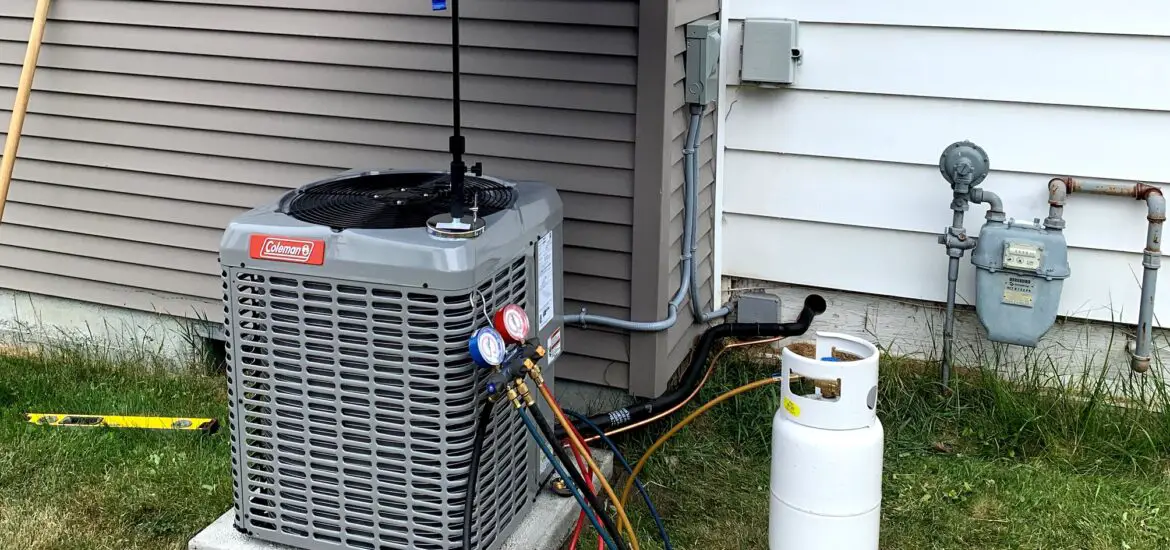If you’re keen to understand what is Freon charging, you’ve landed on the right article. This guide will comprehensively explain what Freon charging is, why it’s critical, and how it’s performed—all in easy-to-understand terms.

What Does ‘Charging’ Mean in the Context of Freon?
The term ‘charging’ might initially sound confusing or technical, but in the context of Freon, it’s relatively straightforward. Charging’ refers to the act of adding or refilling Freon refrigerant in your air conditioning or refrigeration system. This isn’t just about dumping in more liquid; it’s a careful process to make sure the system has the exact amount it needs to function efficiently.
Why do you need to ‘charge’ your system with Freon? Well, Freon isn’t used up like fuel; however, it can leak or escape over time, leading to reduced performance. You may also need to charge a new system initially after installation.
An adequately charged system circulates Freon effectively, maintaining optimal internal pressures and ensuring that your living space stays cool and comfortable.
The charging process aims to bring these levels back to the optimal range. In doing so, you restore the system’s ability to cool your space effectively. It’s like refilling your car’s gas tank, but instead of gasoline, you’re using Freon refrigerant.
What is Freon Charging: The Step-by-Step Process
Charging Freon in an air conditioning system isn’t overly complicated, but it requires attention to detail and adherence to safety protocols. Below is an expanded step-by-step guide to walk you through each phase of this procedure.
Turn Off the AC Unit
Before you start, always turn off your air conditioning system. This is a crucial safety step that ensures there’s no electrical activity while you’re working. Disconnect it from the electrical outlet to be extra safe.
Attach the Manifold Gauges
Manifold gauges are special tools used to measure the pressure inside the AC system. Attach the red hose to the high-pressure port and the blue hose to the low-pressure port, typically found on the AC unit’s compressor or service valve. Ensure these connections are tight to avoid leakage.
You can check out this BENTISM 4-Way AC Manifold Gauge Set from Walmart.
Check the Pressure
Turn your AC unit back on and look at the gauges. They will give you readings of the high and low pressures in PSI (Pounds per Square Inch).
Your AC system’s manual will provide the ideal pressure ranges for operational efficiency. If your system’s pressure is below this range, it needs more Freon.
You can read this article: Refrigerator Compressor Gas Pressure: Easy 411 Guide to find out more about refrigerator gas pressure.
Connect the Freon Container
With the AC unit still off, connect a new container of Freon to the yellow hose on your manifold gauge. Make sure to wear protective gloves and goggles because Freon can be harmful if it comes into direct contact with your skin or eyes.
Add Freon
After you’ve made all the connections, turn your AC unit back on. Slowly open the low-pressure valve on your manifold gauge to allow Freon to flow into the AC unit.
Keep a close eye on the pressure gauge. Adding Freon will increase the pressure, and you’ll want to stop when it reaches the optimal range indicated in your system’s manual.
Adding too much Freon can be as problematic as having too little, as it can put excessive strain on your compressor and lead to premature system failure. It is vital to get the pressure levels just right, which is why checking your manual for the optimal ranges is crucial.
When to Seek Professional Help
If you’re unsure about any step, it’s best to seek professional help. Incorrectly charging your system can lead to inefficiency, and improper handling of Freon can be harmful or even illegal. Professionals have the necessary experience and equipment to do the job safely and effectively.